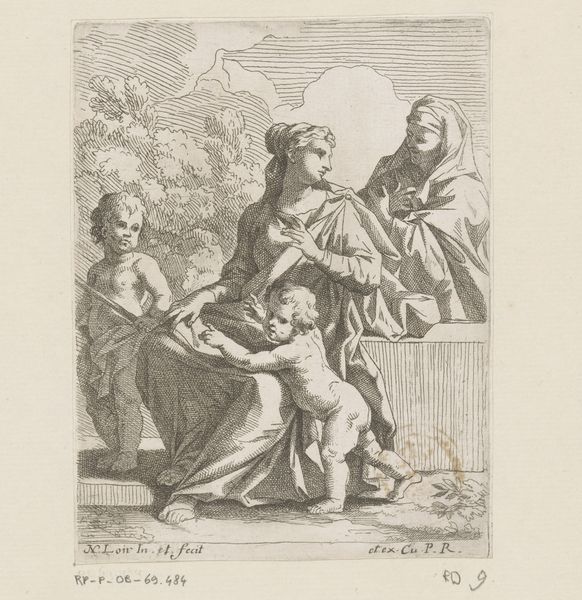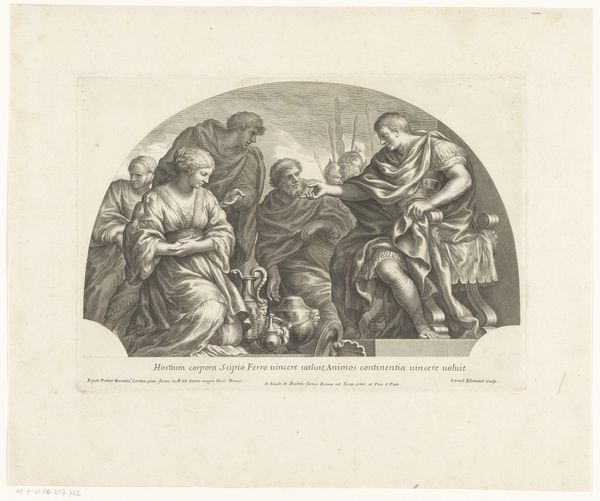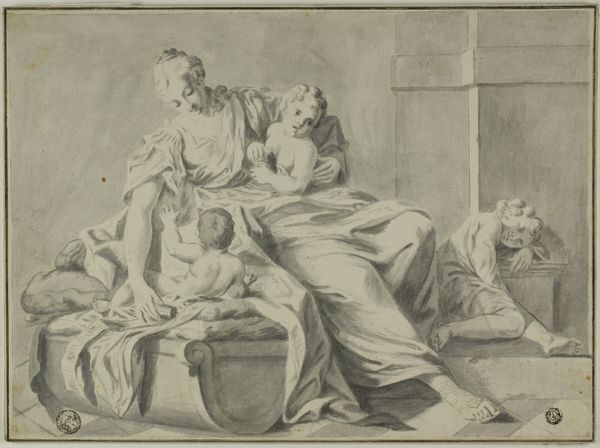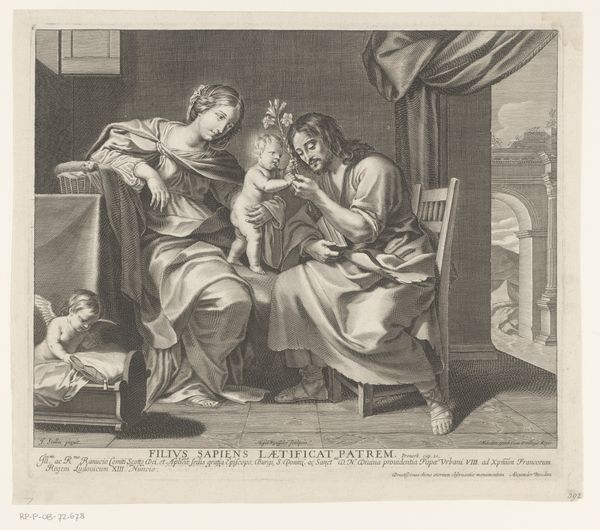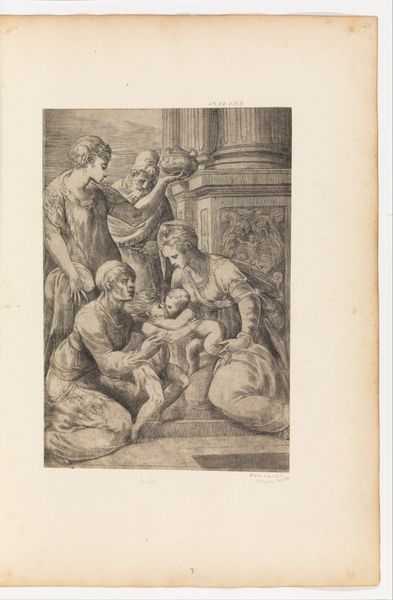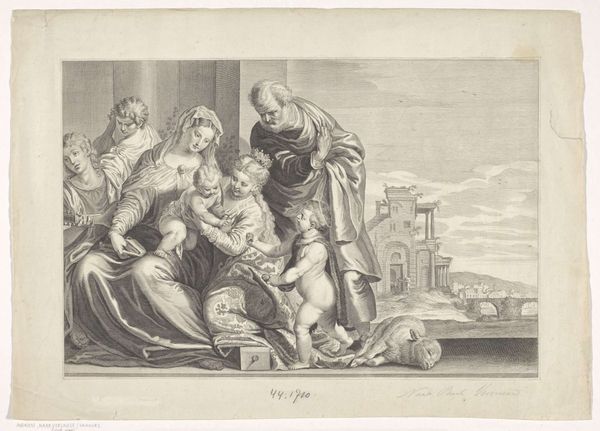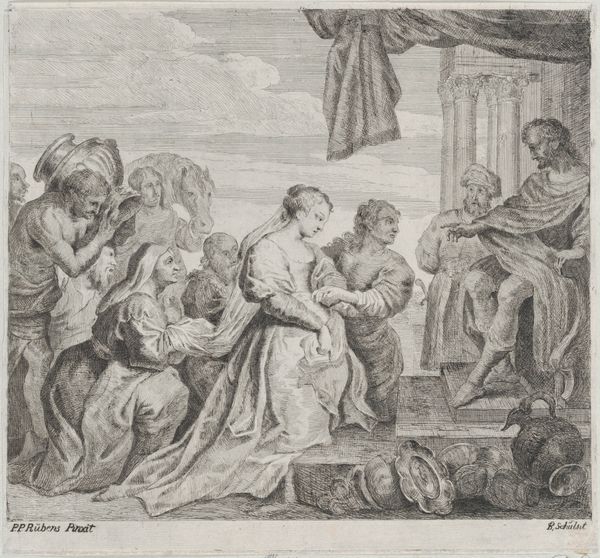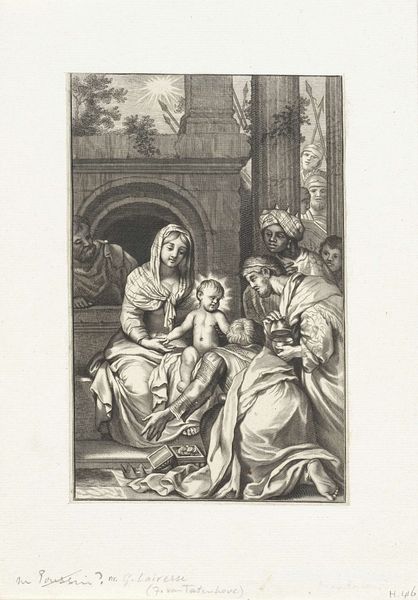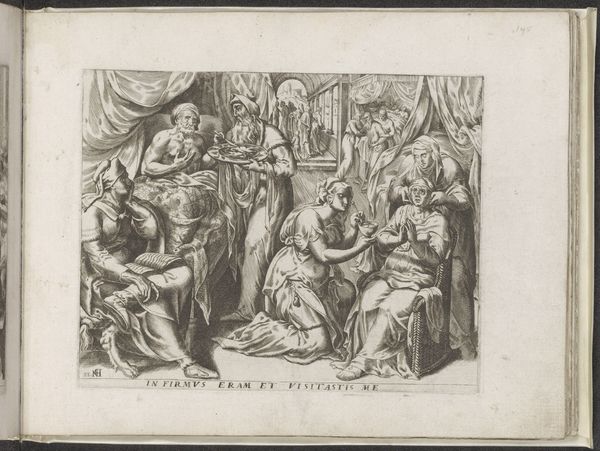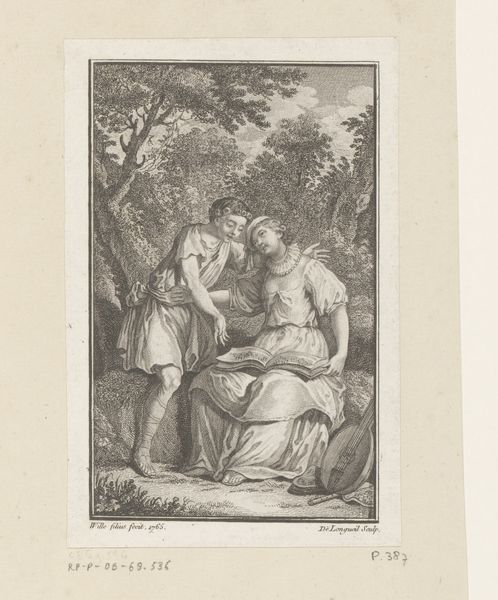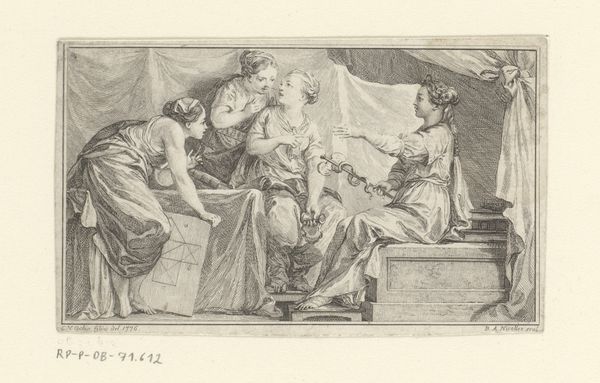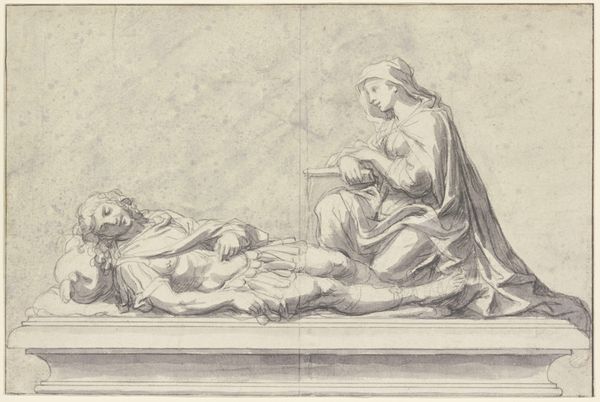
drawing, print, engraving
#
drawing
#
neoclacissism
# print
#
figuration
#
history-painting
#
academic-art
#
engraving
Dimensions: height 87 mm, width 142 mm
Copyright: Rijks Museum: Open Domain
Georges Malbeste created this engraving around 1770. It’s a print, made by cutting lines into a metal plate, inking it, and running it through a press. It is worth considering that for centuries, the printing press was one of the most powerful machines ever invented; it allowed for the mass distribution of images and ideas. The fineness of the lines here is really remarkable. Look at how the artist renders the folds of the women’s drapery, and the architectural details like the fluted column. All that information is conveyed through a system of hatches and cross-hatches. It’s a very labor-intensive process, requiring immense patience and skill. We tend to think of the industrial revolution as a story of machines taking over from handcraft. But in fact, for a long time, the two went hand-in-hand. The printing press itself was a machine, but the engraver was still a highly trained artisan. Only later would photography and other technologies make this kind of image-making obsolete. So in looking at this print, we’re really seeing a moment of transition, where old and new technologies are working together.
Comments
No comments
Be the first to comment and join the conversation on the ultimate creative platform.
